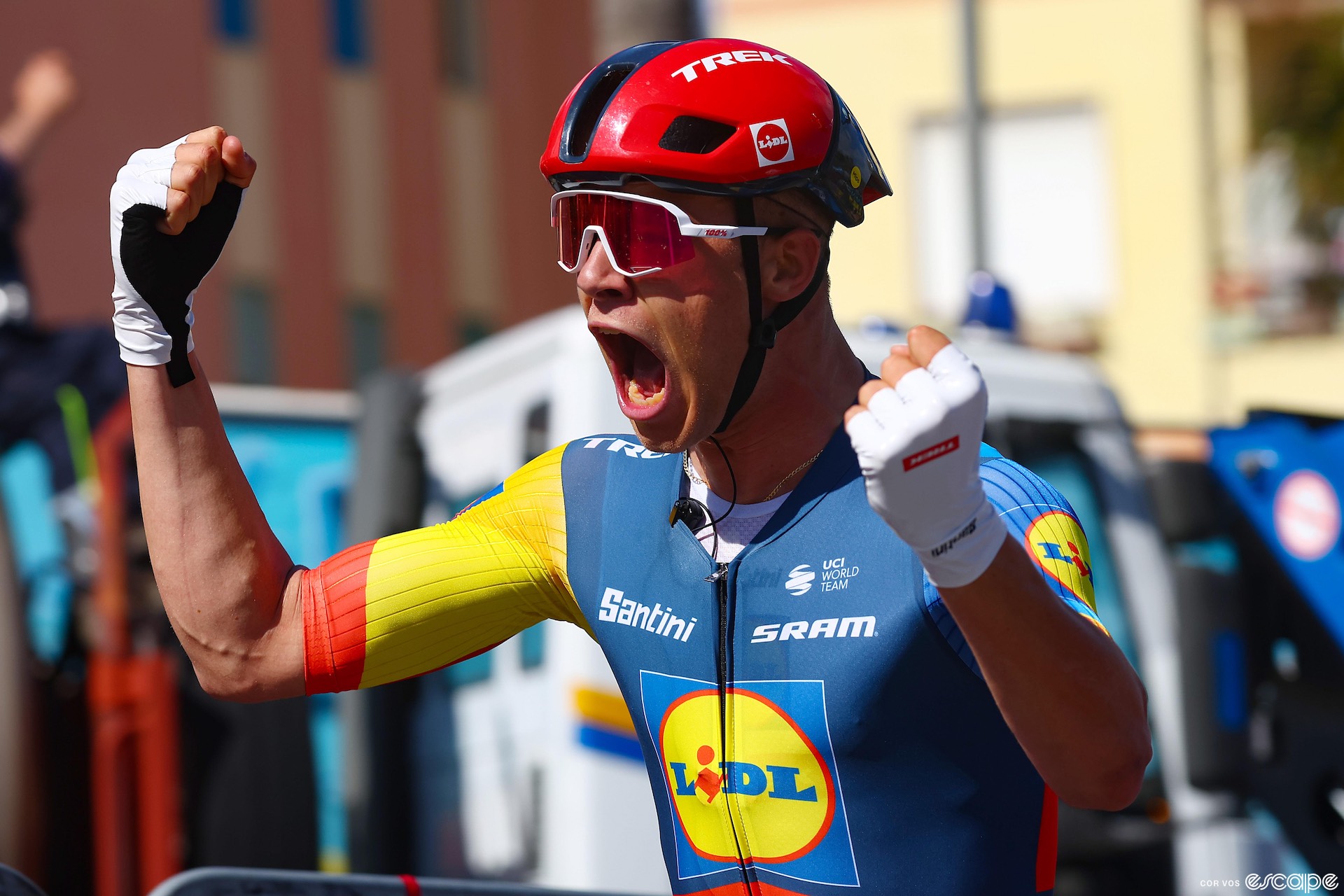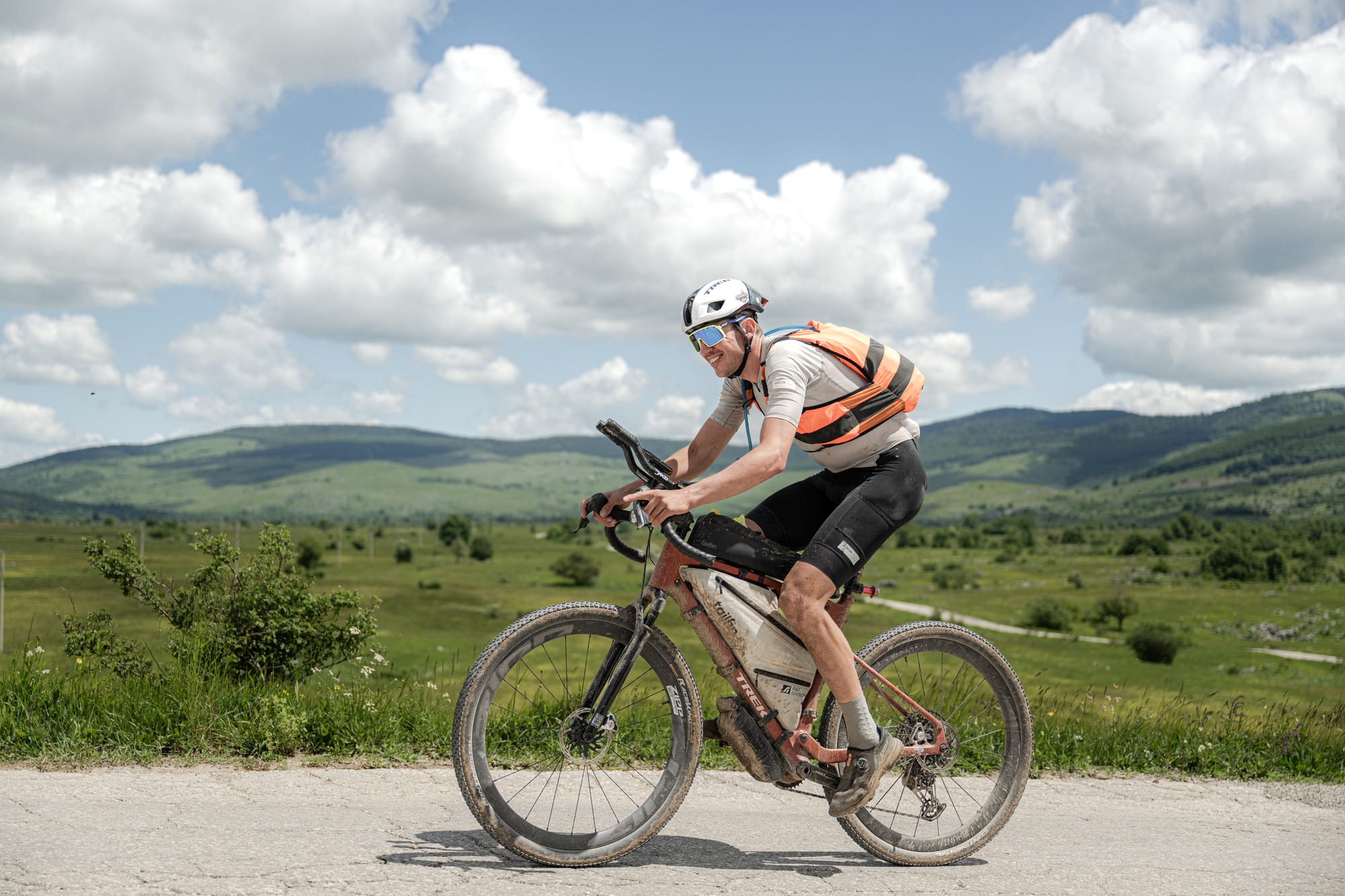Sprinting is a funny business. Power is the foundation on which all sprinters build, but so often, a sprint comes down to canny positioning and timing. It's not always the fastest rider who wins a sprint – all that matters is who was fastest for a few crucial moments. On stage 4 of the Giro d'Italia, however, Jonathan Milan (Lidl-Trek) left no room for questions. He did not look to be all that efficient or aerodynamic, but that did not seem to matter. His power carried the day.
In the wind with over 200 meters to go, head bobbing wildly as he hammered on the pedals, Milan's 83ish kg frame might have sheltered his rivals from the wind for a few moments before they tried to surge past him – but none of them could come around. According to Velon, he produced a peak power of 1940 watts and averaged 1620 watts over the final 20 seconds of the stage. But even with those numbers, it's never only watts that matter.
We set out to pick apart the sprint and try to answer a simple question: Who was fastest? Not who won, but who showed that with the right timing, they perhaps should have. In this case, the answer is the same. Let's break down the final minute of stage 4 ...
The setup
Filippo Ganna's attack on the Capo Mele with about 4 km to go could have thrown the proverbial cat amongst the pigeons, but the lead-out riders refused to let the Ineos rider derail their plans. They kept him relatively close into the last kilometer. With some 500 meters to go, Milan's Lidl-Trek teammate Simone Consonni closed the last few meters to Ganna.
In his effort to catch Ganna, Consonni probably expended a bit more energy before the finishing straight than he would have liked, but he got that job done to give Milan a chance to do his thing. Consonni then had enough left in the tank to keep pushing on for at least a little bit longer with Milan just behind him.
At 300 meters to go, just as Consonni was flagging, Milan was handed a gift in the form of Christophe Laporte, who surged to the front with Visma-Lease a Bike teammate Olav Kooij in tow. Milan waited just a moment, but then, with well over 200 meters still to go, he launched his sprint, and Kooij went too.
With Milan and Kooij winding up to speed with some distance still to cover, fast finishers like stage 3 winner Tim Merlier (Soudal-QuickStep), Kaden Groves (Alpecin-Deceuninck), and Phil Bauhaus (Bahrain Victorious) could still spend a few more seconds drafting the riders in front of them.
The kick
Milan's raw power is visible in the first few full-strength pedal strokes. His head starts to bob, his shoulders rock, but he is also immediately pulling past Kooij. There's the 1920-watt moment.
As Merlier and Bauhaus hit the throttle, Kooij started to fade, while Groves kept his head down for just a few moments more.
The only rider with a similar level of acceleration to Milan's was Merlier (in the purple ciclamino jersey). But though he gained ground on Milan, a few seconds in the wind quickly dulled his advance, and he eventually faded to fifth. Groves, having spent precious seconds in the slipstream, gained ground when he made a bid for the line at what looked like just the right time. But after only a few moments, his rapid advance also seemed to slow against the wall of wind.
Milan, who had been charging wildly through that same air for several seconds already, would not be denied.
The answer to our original question, then, is the winner himself. Milan's turn of speed was matched, or even exceeded, by his rivals as they came out of his slipstream. But a few seconds in the wind was enough to send them right back.
The view from the side shows Groves throwing his bike perhaps a bit earlier than he should have, but a better bike throw was not likely to propel him past last year's Giro points champ. Milan's blinding speed was apparent from the moment he started to leave Kooij in the rearview mirror at the start of the sprint, and it was still on display over 200 meters later as a fresh and well-positioned Groves came up short as well.
Four stages into this Giro, Milan is back in the maglia ciclamino – and if he has more performances like Tuesday's in his back pocket, we may be seeing more stage wins from the 23-year-old Italian as his home Grand Tour rolls on.
Did we do a good job with this story?



